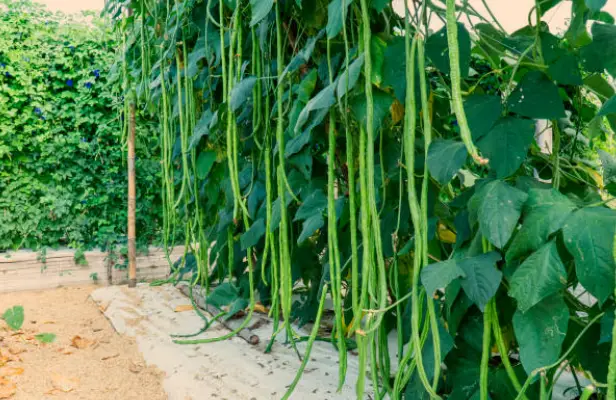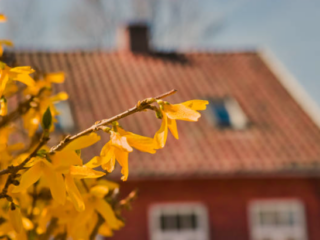If you’re a fan of green beans but want to try something a little different, you should give long beans a try in your garden this year. Also known as asparagus beans, yard-long beans, or Chinese long beans, these vegetables are a staple in Southeast Asian cuisines. With their potential to grow over a yard in length and their distinctive nutty flavor, long beans make for an interesting and productive addition to any home vegetable garden.
What are Long Beans?
Long beans are a warm-season crop that produces striking, slender pods that can reach well over two feet in length when mature. Despite their impressive size, the bean pods themselves are quite tender when picked at the ideal stage. They have a pleasantly crisp texture and a richer, nuttier flavor than standard green beans.
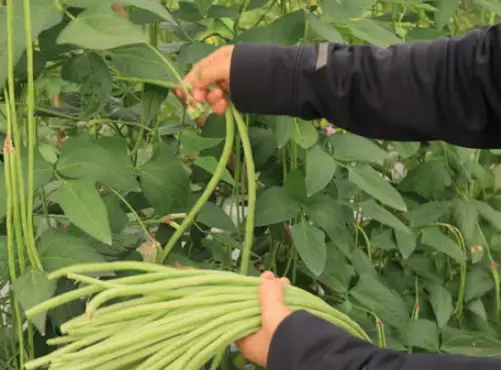
grow long beans
Originally from Southeast Asia, long beans thrive in hot, humid environments and are a dietary staple across the region. In Thailand they are known as thua fak yao, in Malaysia as kacang panjang, and in the Philippines as sitaw. While they may look unusual, these legumes offer excellent nutrition as they are high in protein, vitamins A and C, and fiber.
Varieties to Grow
When it comes to choosing long bean varieties for your garden, there are several great options:

Red-Seeded Long Bean: This heirloom variety produces beautifully deep red pods that turn green when cooked. It’s an eye-catching choice for gardens.
Long Bean ‘Khao Tok’: A reliably productive Thai heirloom with pods that can exceed 30 inches in length. It has excellent heat tolerance.
Long Bean ‘Hybrid Mohawk’: A high-yielding hybrid cultivar with 18–24 inch long pods. It has good disease resistance.
Phuket Long Bean: This variety from Thailand grows well in hot, humid climates and has pods up to 2 feet long. It has a wonderful, rich flavor.
Chinese Red Noodle Bean: With deep red 18-inch-long pods, this is an ornamental and edible variety that adds color to the garden.
No matter which variety you choose, the growing requirements for long beans are quite similar. They need hot, humid conditions and plenty of room on a trellis or pole to allow their vines to climb.
How to Grow Amazing Long Beans
Long beans are heat lovers that won’t tolerate any cold, so they should be started indoors and transplanted out after all the danger of frost has passed in the spring. Start seeds about 4–6 weeks before your expected transplant date. Sow the seeds 1 inch deep and keep the soil warm (around 75–85°F) until germination, which should occur within 5–10 days.
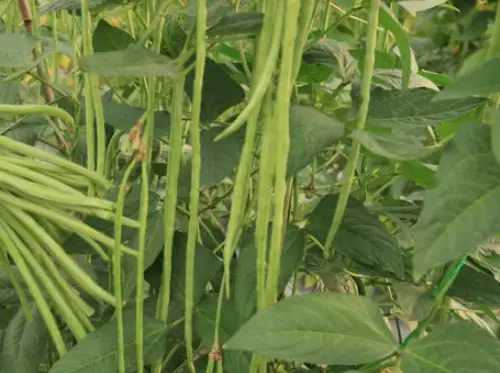
Once the seedlings have their first set of true leaves, gradually acclimatize them to outdoor conditions over the course of 7–10 days. Long beans can then be transplanted into raised beds, rows, or large containers once nighttime temperatures are consistently above 60°F.
Choose a sunny, well-draining spot in your garden. Long beans appreciate fertile soil amended with compost or aged manure. Space plants 8–12 inches apart in rows, or plant two seedlings per 12-inch spacing in a wide raised bed.
Install a sturdy 6-foot trellis or pole at the time of transplanting, as long beans are vigorous vining plants. Guide the vines upwards as they grow, twisting them in a spiral around the support. This will maximize airflow and sun exposure to the plants.
Long beans require consistent moisture, especially when the plants are flowering and setting pods. Aim for about 1-2 inches of water per week through irrigation or rainfall. Mulch around the plants to help conserve soil moisture.
These heat-loving crops thrive in temperatures between 75 and 90°F. However, they will stop producing new pods if nighttime lows dip below 60°F or daytime highs exceed 95°F for too long. Provide afternoon shade with taller crops or a shade cloth if extremely hot conditions are expected.
Fertilize plants every 4-6 weeks with a balanced vegetable fertilizer or side-dressing of compost to promote strong, productive vines.
No special pruning is required for long beans, but be sure to pick the pods frequently to encourage continued production. Harvest the tender pods when they are 12–18 inches long by snapping or cutting them off the vines with pruners.
Potential Pests and Problems
Overall, long beans are quite hardy when kept warm, but there are a few pests and diseases to monitor:
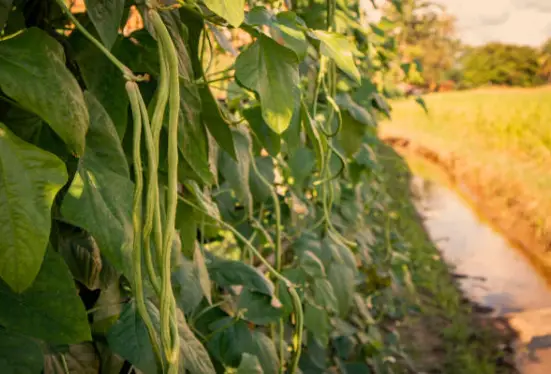
Aphids: These tiny sap-sucking insects can spread viruses and cause distorted growth. Control with insecticidal soap or strong water jets.
Mexican Bean Beetles: The larvae and adults of this pest will skeletonize leaves and pods. Pick off by hand or use neem oil.
Powdery Mildew: This fungus causes a white powdery coating on leaves and stems. Prevent with good airflow and treat with neem oil or copper fungicide.
Blossom End Rot: This disorder causes a leathery brown decay on pods and is caused by calcium deficiency. Water properly and use calcium sprays.
Root Knot Nematodes: microscopic worms that cause knotted, distorted roots and stunted growth. Rotate crops and use nematode-resistant varieties.
With a bit of care to provide the right warm conditions and manage any pests, you’ll be rewarded with a bountiful harvest of these unique and delicious beans.
Enjoying the Long Bean Harvest
One of the best reasons to grow long beans is for their stellar culinary versatility. Because the pods stay tender even when reaching over a foot long, you’ll have quite a generous harvest window to pick and enjoy them at their flavorful best.
In Southeast Asian cuisines, long beans are stir-fried, curried, added to soups and stews, or simply steamed or boiled. Their firm texture holds up beautifully in cooking. Younger, more slender pods can be enjoyed raw as crunchy crudités.
Some popular ways to enjoy long beans include:
Pad Prik King: A classic Thai stir-fry with curry paste, long beans, and meat
Long Bean Omelet: The beans add texture and nutrition to egg dishes
Green Curry: Long beans perfectly complement the flavors in a coconut curry
Ginisang Sitaw: A Filipino dish with long beans sauteed with garlic, tomatoes, and pork
Long Bean Salad: The beans can be enjoyed raw with an Asian-inspired vinaigrette
You can also use long beans as a crunchy, flavorful substitute for green beans in any of your favorite recipes, from steamed to sauteed to baked casseroles. Their size makes them a dramatic addition to veggie platters, too.
Whichever way you choose to enjoy them, growing long beans is sure to add variety and global flavors to your home garden harvests. With their impressive yield potential and tropical taste, these unique legumes are well worth making space for in the veggie patch. Give them a try this season!

